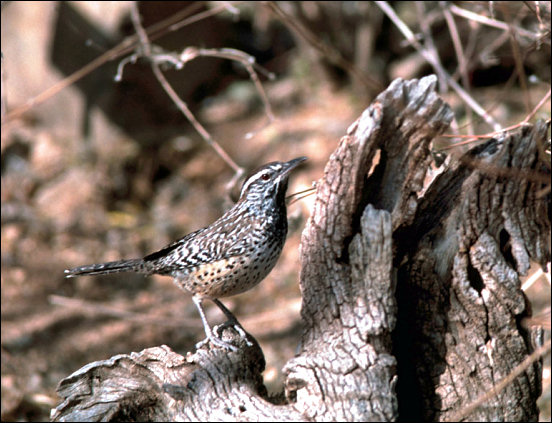

Our northern desert area is blessed with all sorts of wrens: Bewick's, House, Marsh, Cactus, Rock, and Canyon, as well as an occasional wanderer from elsewhere. There's one word that pretty much says it all when it comes to wrens: hyper! They tend to be secretive, but their jerky, rapid movements and, when disturbed, a vicious, scolding tongue, are characteristic. Whatever else it may be, around wrens it's seldom boring.
Our largest wren, the Cactus Wren, probably is best known to those hiking our desert. Its ball-like nest with a side opening is often prominent in a cholla cactus or some other place excruciatingly difficult for a predator to access. Although the state bird of Arizona, it's equally prominent in the Chihuahuan Desert.
Two of our wrens, the Rock Wren and the Canyon Wren, are true to their names. The Canyon Wren usually is around cliffs and steep, rocky slopes in our desert ranges. The Rock Wren prefers jumbled piles of rock, such as talus slopes. Though only one bears the name, all of our wrens really rock!

Listen to the Audio (mp3 format) as recorded by KTEP, Public Radio for the Southwest.
Contributor: Arthur H. Harris, Laboratory for Environmental Biology, Centennial Museum, University of Texas at El Paso.
Desert Diary is a joint production of the Centennial Museum and KTEP National Public Radio at the University of Texas at El Paso.

Cactus Wren. Photograph by Gary M. Stolz, courtesy of the U.S. Fish and Wildlife Service.